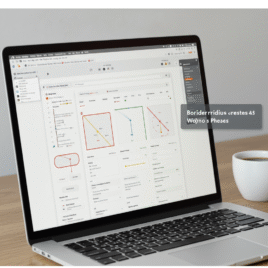If you’ve ever seen the dreaded “Fatal error: Cannot redeclare function…” white screen of death, you’ve experienced a classic WordPress problem: a code collision. In a shared ecosystem with thousands of plugins and themes, how do you ensure your code plays nicely with others? The answer lies in moving beyond old habits and embracing modern PHP practices.
For years, the solution was prefixing everything. Every function, class, and constant was prepended with a unique identifier, like my_awesome_plugin_do_something(). While functional, this leads to long, clunky names and doesn’t solve the core issue of a crowded, global namespace. It’s time to level up. This guide will show you how implementing PHP namespaces and adhering to strict coding standards can transform your plugin development from chaotic to clean, professional, and conflict-free.
Why Your Code Needs to Escape the Global Namespace
Imagine a single, massive filing cabinet where every developer in the world throws their documents. That’s the PHP global namespace. Without any organization, you’re bound to find two files with the same name, causing a conflict. This is precisely what happens in WordPress. A generic function name like get_user_data() in your plugin could easily clash with another plugin—or even a future version of WordPress core—that declares a function with the same name.
Prefixing was a bandage on this problem. Namespaces are the cure. They provide a way to encapsulate your code, creating a private, virtual space for your functions, classes, and constants. Think of it as giving your plugin its own dedicated filing cabinet, neatly labeled and organized.
Introducing Your New Best Friend: PHP Namespaces
A namespace is a simple declaration you place at the very top of your PHP files. It acts as a container, ensuring that the code within it won’t conflict with code outside of it. Let’s look at a simple before-and-after.
The Old Way (Prefixing):
<?php
// A function in your plugin
function my_awesome_plugin_init() {
// Initialization logic here...
}
add_action( 'init', 'my_awesome_plugin_init' );
// A class in your plugin
class My_Awesome_Plugin_Admin_Page {
// ...
}The Modern Way (Namespacing):
<?php
namespace MyAwesomePlugin\Core;
// A function in your namespaced plugin
function init() {
// Initialization logic here...
}
add_action( 'init', __NAMESPACE__ . '\init' );
// A class in your namespaced plugin
class AdminPage {
// ...
}Notice the difference? The function is now simply init() instead of my_awesome_plugin_init(). It lives safely inside the MyAwesomePlugin\Core namespace. When we hook it into WordPress, we use the __NAMESPACE__ magic constant to provide the full path. The code is cleaner, more readable, and completely insulated from conflicts.
The Unsung Hero: WordPress Coding Standards (WPCS)
Writing conflict-free code is only half the battle. Writing code that you (and others) can actually read and maintain six months from now is just as important. This is where coding standards come in. The WordPress Coding Standards (WPCS) are the official set of best practices for formatting WordPress PHP, HTML, CSS, and JavaScript.
Why are they so critical?
- Readability: Consistent formatting makes code significantly easier to scan and understand.
- Collaboration: When everyone on a team follows the same rules, integrating code becomes a seamless process.
- Maintainability: Well-formatted and documented code reduces the time it takes to debug issues or add new features.
- Security & Performance: The standards often guide you away from insecure practices and towards more performant, explicit code, like using
$wpdb->prepare()for all database queries.
While the broader PHP world often looks to PSR standards, the WordPress ecosystem has its own specific conventions, like using Yoda conditions (if ( true === $variable )) and specific rules for brace placement and spacing. Adopting WPCS is a hallmark of a professional WordPress developer.
Automating Consistency with PHP_CodeSniffer
Manually checking every line of code against a style guide is tedious and prone to error. Fortunately, you don’t have to. Tools like PHP_CodeSniffer (phpcs) can automatically scan your code and flag any violations of the WordPress Coding Standards.
By integrating phpcs with the WPCS ruleset into your code editor (like VS Code) or your deployment pipeline, you can enforce consistency automatically. It acts as your personal quality assurance assistant, catching everything from incorrect spacing to potential security vulnerabilities before the code ever goes live. This isn’t just about being picky; it’s about building a professional workflow that guarantees a high-quality output every time.
Conclusion: Build Better, More Professional Plugins Today
Transitioning from prefixes to PHP namespaces and strictly adopting the WordPress Coding Standards is more than just a change in syntax; it’s a change in mindset. It’s the difference between a hobby project and a professional-grade product. By embracing these modern development practices, you create plugins that are not only robust, scalable, and conflict-free but also a joy to maintain and collaborate on.
Stop fighting the global namespace and start building cleaner, more reliable WordPress solutions. Your future self—and every user who installs your plugin—will thank you for it.
Ready to elevate your WordPress projects with clean, professional code? Whether you need a custom plugin built from the ground up or a performance audit of your existing site, our team of expert developers is here to help. Contact us today to discuss your project!





